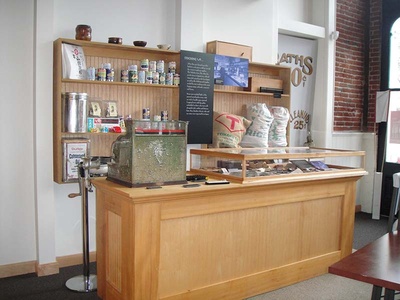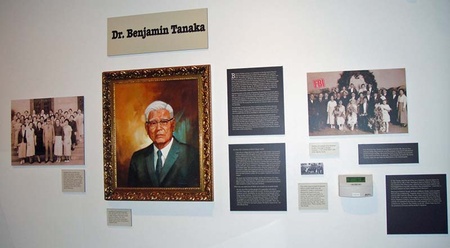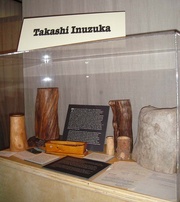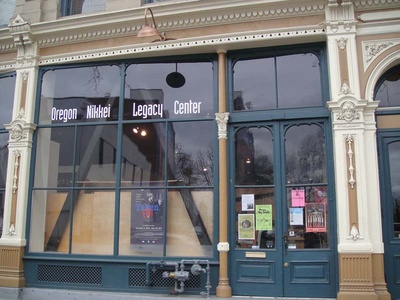I happened to be in Portland, Oregon, recently, and dropped in on the Oregon Nikkei Legacy Center. The center’s permanent exhibit features wonderfully detailed recreations of barracks at the Minidoka prison camp in Idaho and a pre-war general store, as well as maps and displays that evoke the pioneering spirit of the Nikkei who worked on farms, in canneries, or lumber camps throughout the region, or owned and operated small businesses in the city’s Nihonmachi.

Recreation of Portland Japantown’s general store, Teikoku, which sold food, clothing, equipment and supplies.
Especially interesting, though, was a temporary exhibit “Taken: FBI,” which focuses on a part of the World War II Nikkei experience that’s less well-known than the concentration camps where 110,000 Japanese were imprisoned. Just hours after the December 7, 1941 bombing of Pearl Harbor, FBI agents along the West Coast banged on the doors of Japanese community activists, religious leaders and educators, searching their homes, handcuffing them and pulling them from their homes. The 17,477 prisoners, most of them men, were sent to far-flung prisons in Missoula, Montana; Fort Sill, Oklahoma; Fort Livingston, Louisiana; and Santa Fe, New Mexico.
These men were the most dynamic, enterprising and educated of their immigrant communities. Yet isolated from their families—most of whom were imprisoned in the 10 concentration camps spread out between the West Coast and Arkansas—some of the men were shattered by the experience, their health ruined and their faith in their adopted country broken. Others survived to rebuild their former lives and professions.

Display from “Taken: FBI” detailing the life of Portland doctor Benjamin Tanaka, who became head physician at his prison camp in Santa Fe.
This account by Jill Yuzuriha, is a fine summary of all the work that went into researching and mounting the Oregon Nikkei Legacy Center exhibit. “Taken: FBI” features a number of the 118 Portland Issei who were taken away by the FBI, including Dr. Benjamin Tanaka. Born on a sugar and pineapple plantation in Hawaii, as a boy he was beaten by the plantation foreman for trying to teach himself to read. Tanaka went on to graduate from the University of Oregon’s medical school, and while imprisoned in Santa Fe, became head physician at the camp hospital. The title is impressive, but deceptive; Dr. Tanaka had to care for his fellow inmates with little to no equipment. One of his ingenious solutions to shortages was as a can lined with aluminum foil, which he fashioned into a makeshift surgical lamp. The doctor returned to Portland after the war, and later established a well-respected clinic in Ontario, Oregon.

Display of wooden vases and containers made by Issei prisoner Takashi Inuzuka out of wood he scavenged from the prison grounds in Santa Fe
Another Portland Issei taken by the FBI was Takashi Inuzuka, who was imprisoned in Santa Fe until January 1946. A wooden trunk that he made in prison is included in the exhibit, and it turns out that Inuzuka made separate trunks for his wife and for each of his several daughters. Imagine how much he must have missed them; making each of them a gift with his own hands must have been one way to keep them close to his heart. His family relocated to Denver during the war, and visited Inuzuka while he was in prison. After the war, he returned to Portland and rebuilt his greenhouse business.
Both Tanaka and Inuzuka were among the half of the city’s pre-war Japanese population to return to their former city; the rest, discouraged by reports of lingering anti-Japanese sentiment resettled inland, where there was less hostility toward them.
* * * * *
Taken: FBI
Through May 29, 2011
Oregon Nikkei Legacy Center
121 NW 2nd Avenue
Portland, OR 97209
(503) 224-1458

The Oregon Nikkei Legacy Center is located in the historic former Merchant Hotel building in downtown Portland, once the thriving center of the city’s Japantown.
© 2011 Nancy Matsumoto





